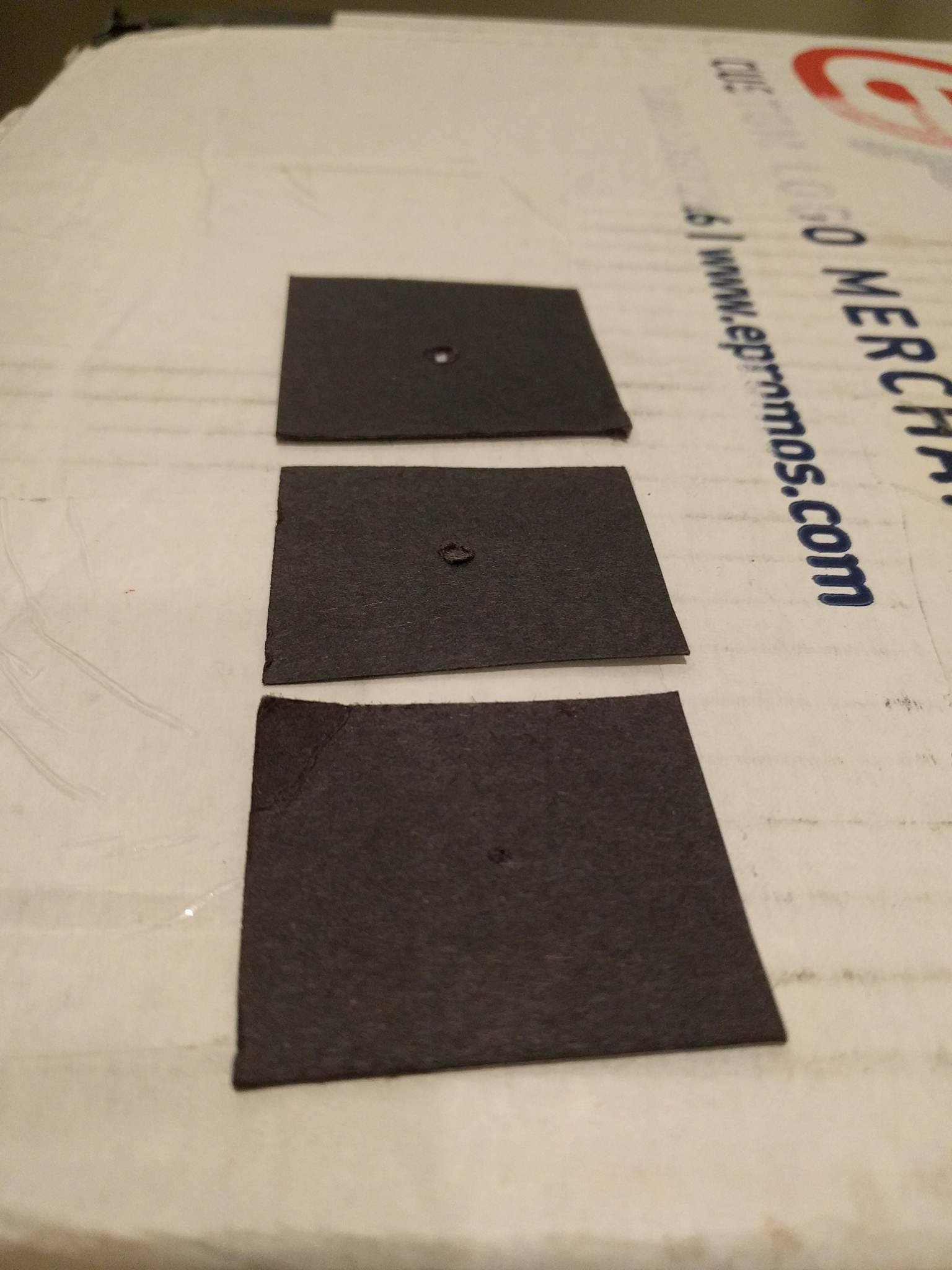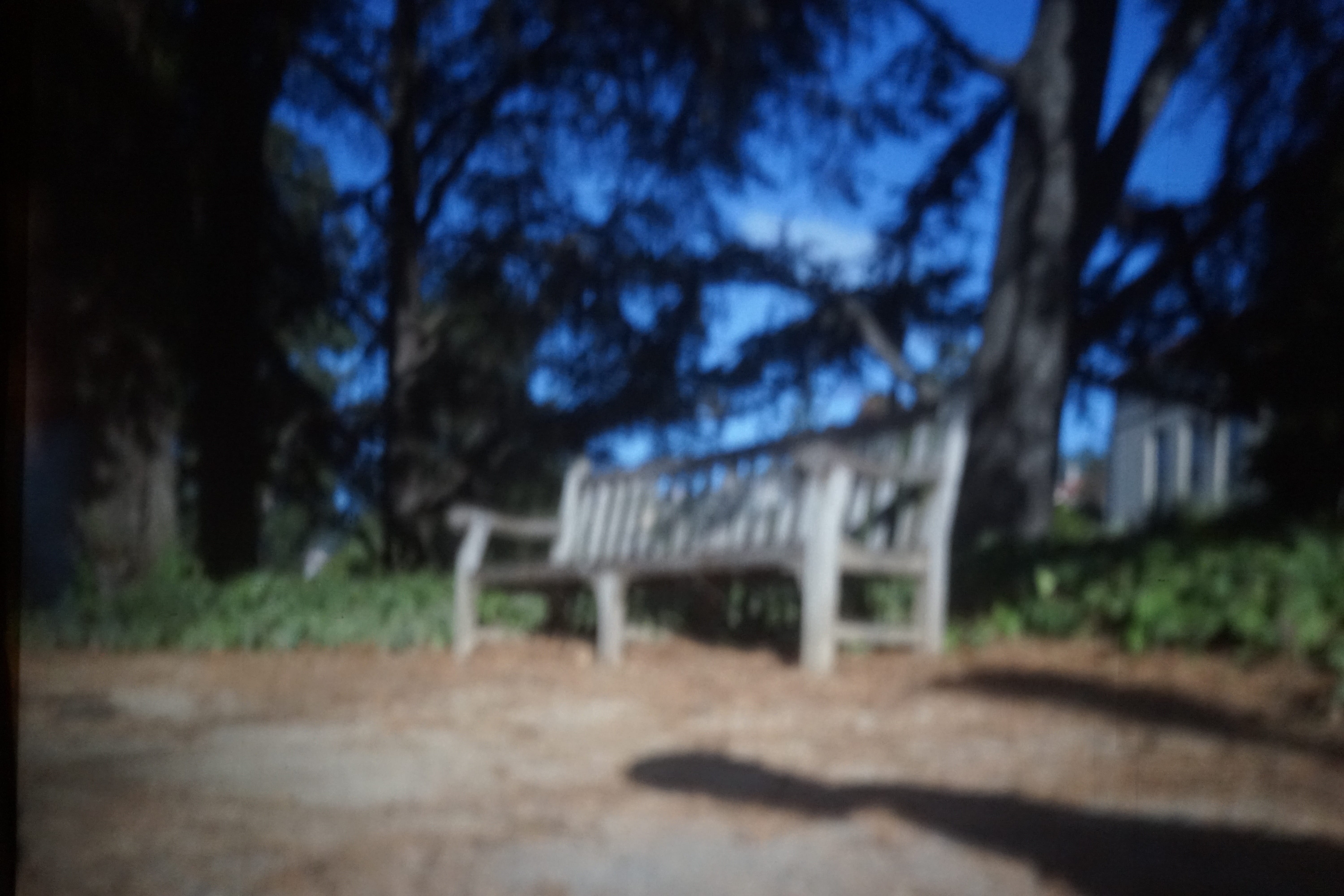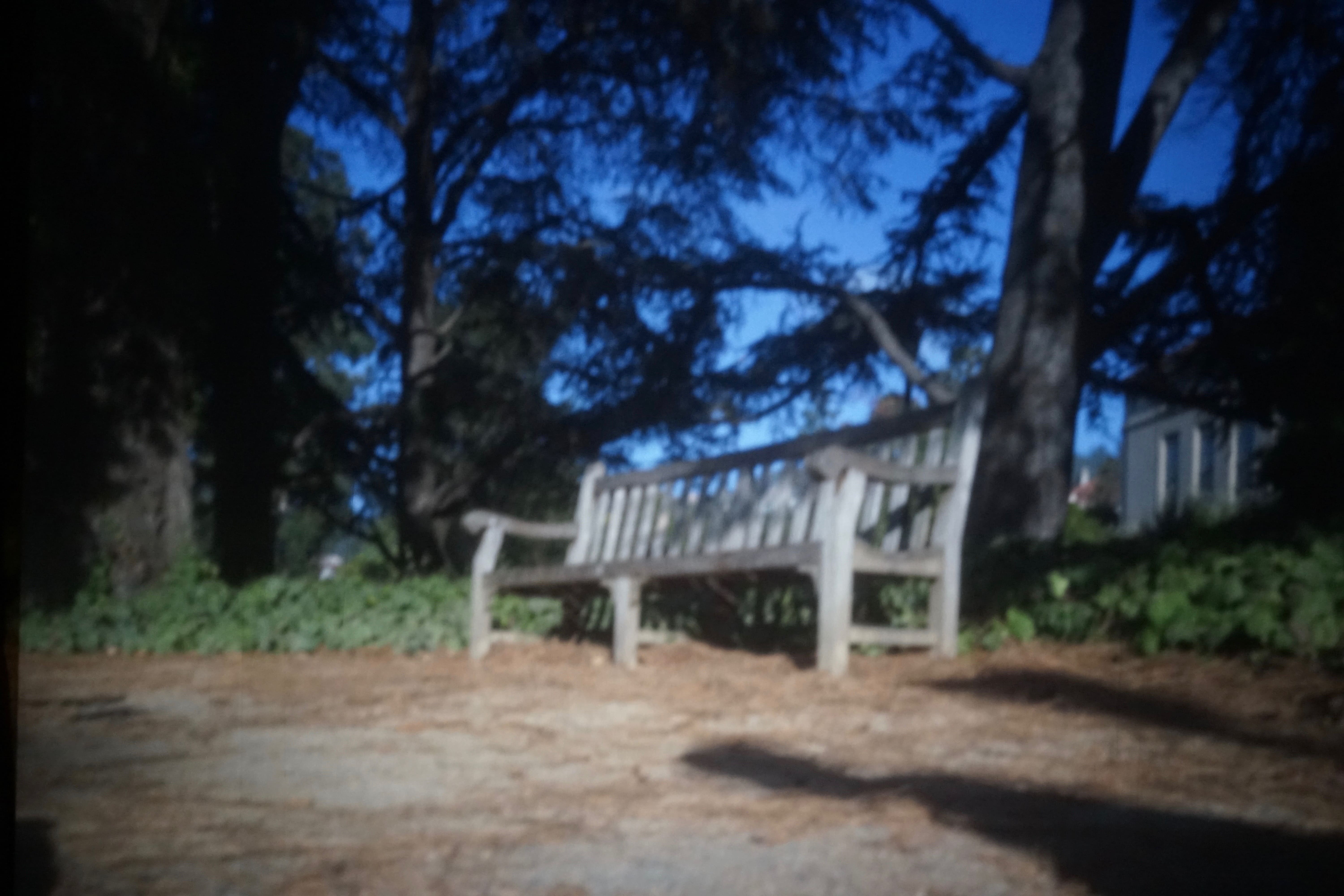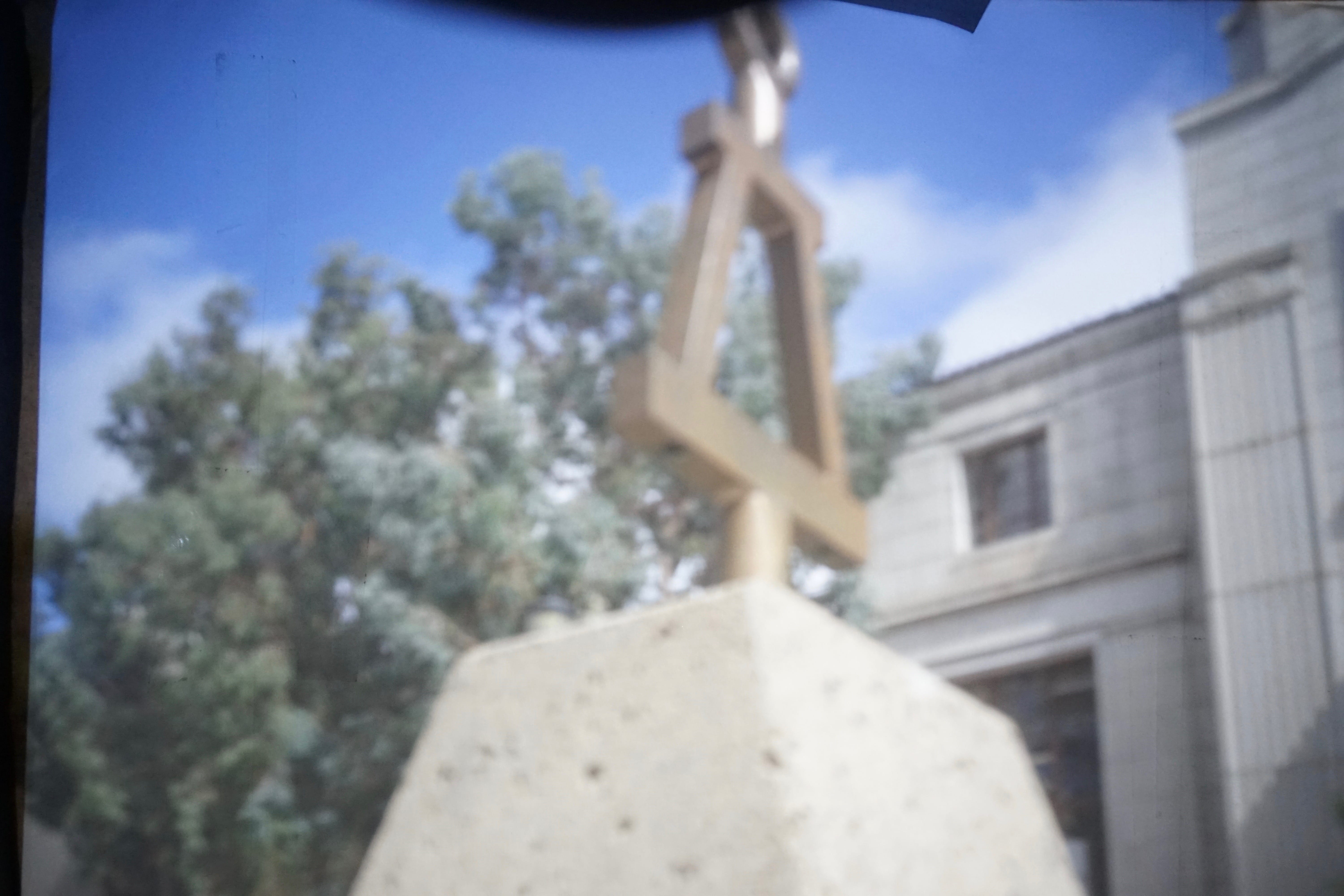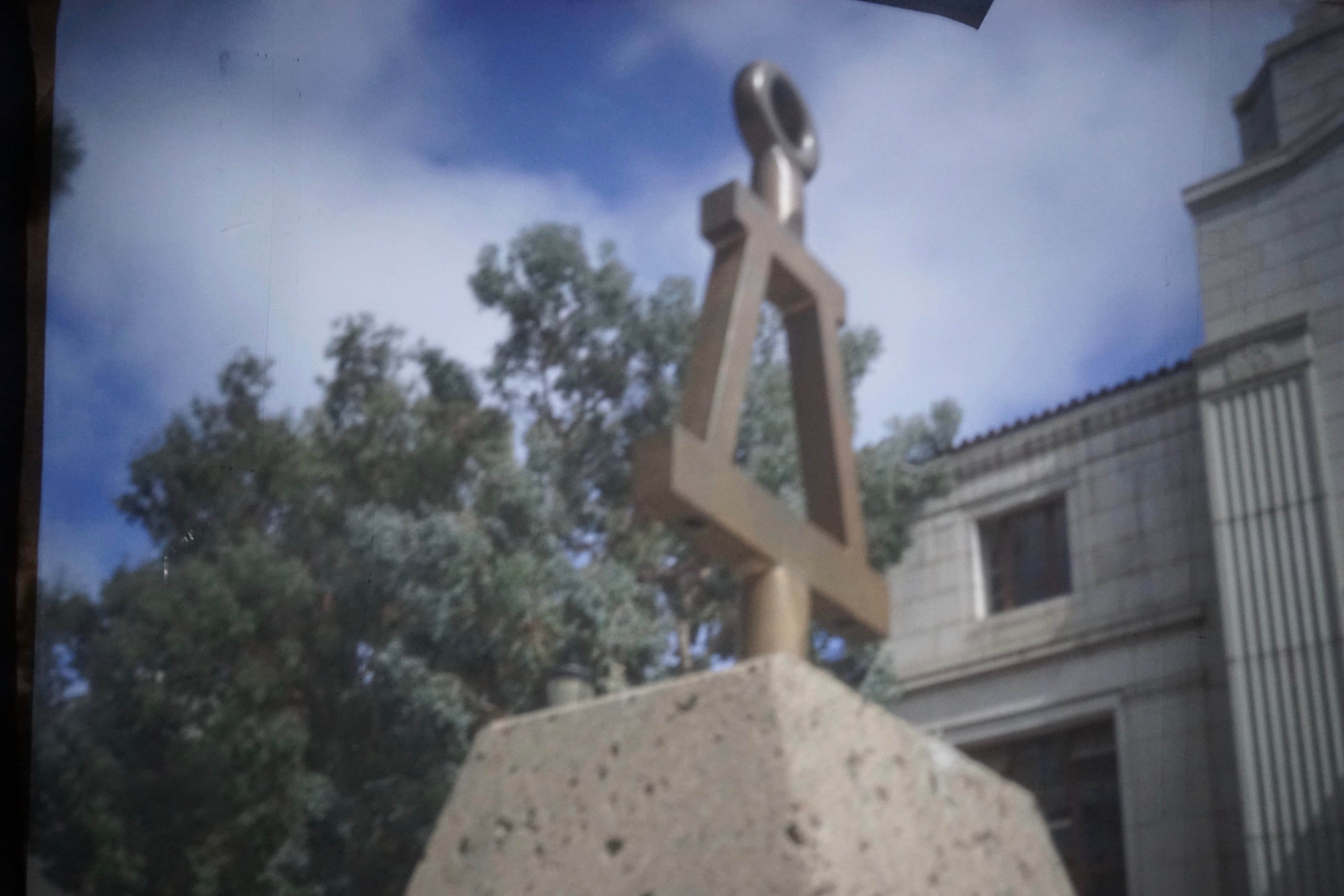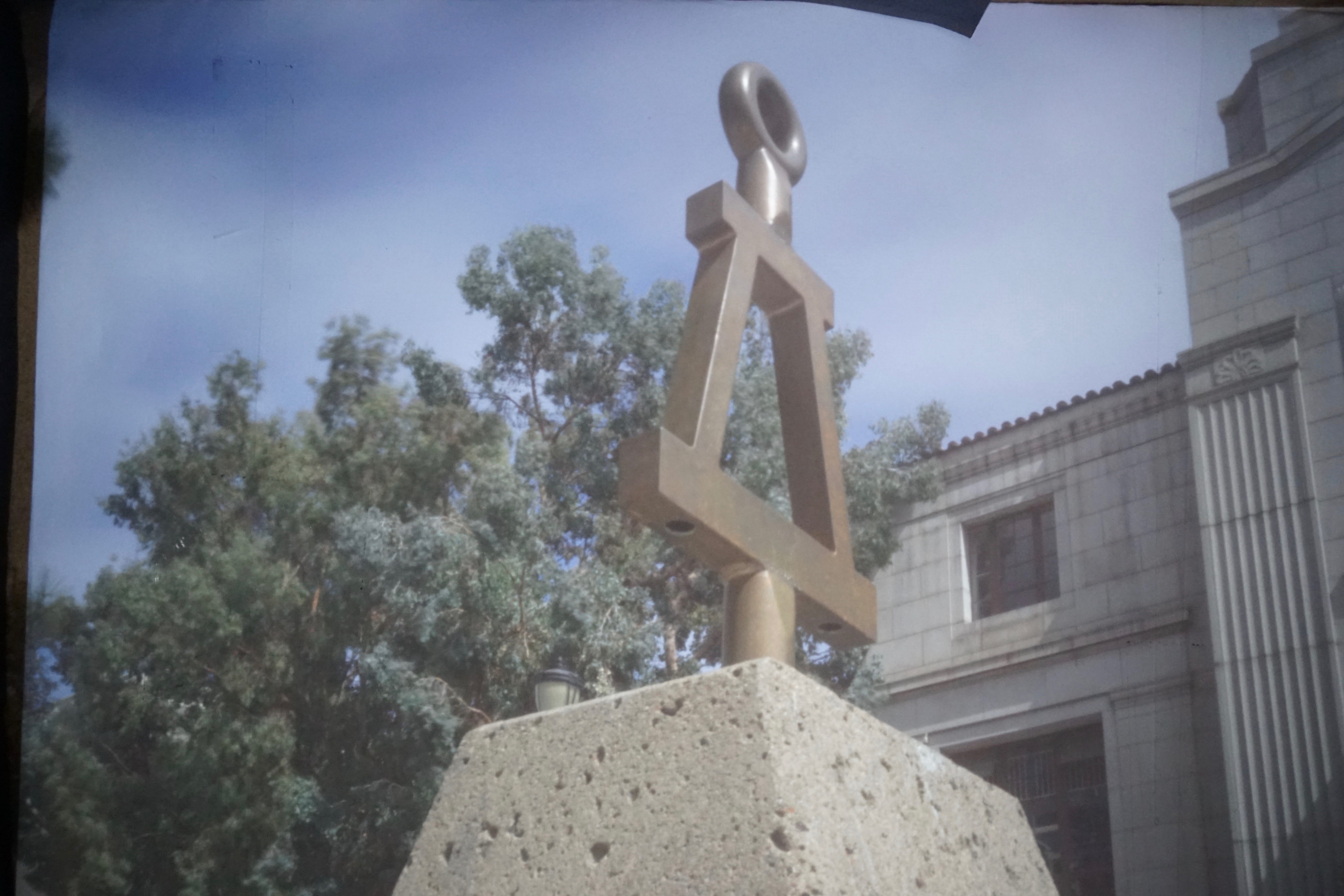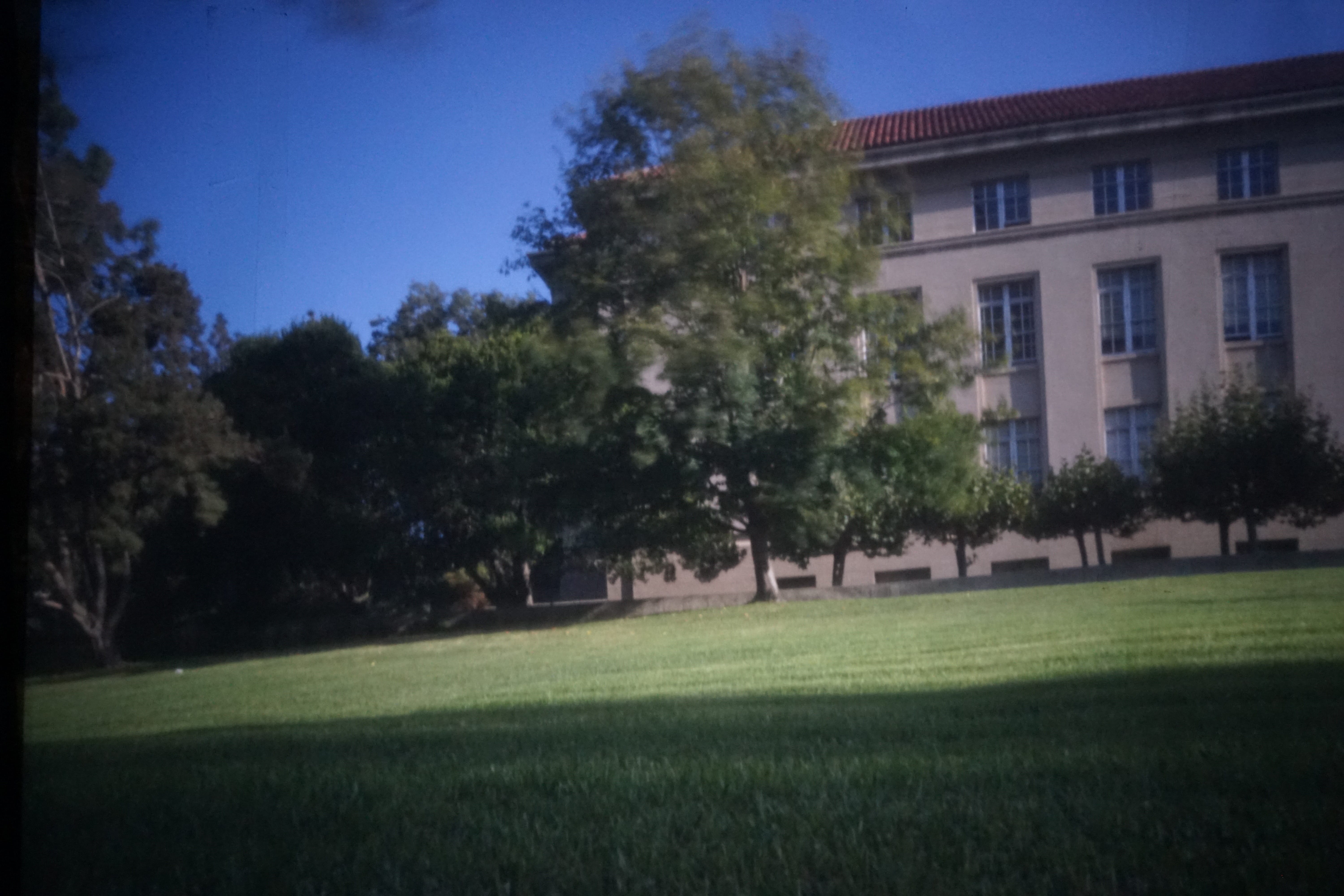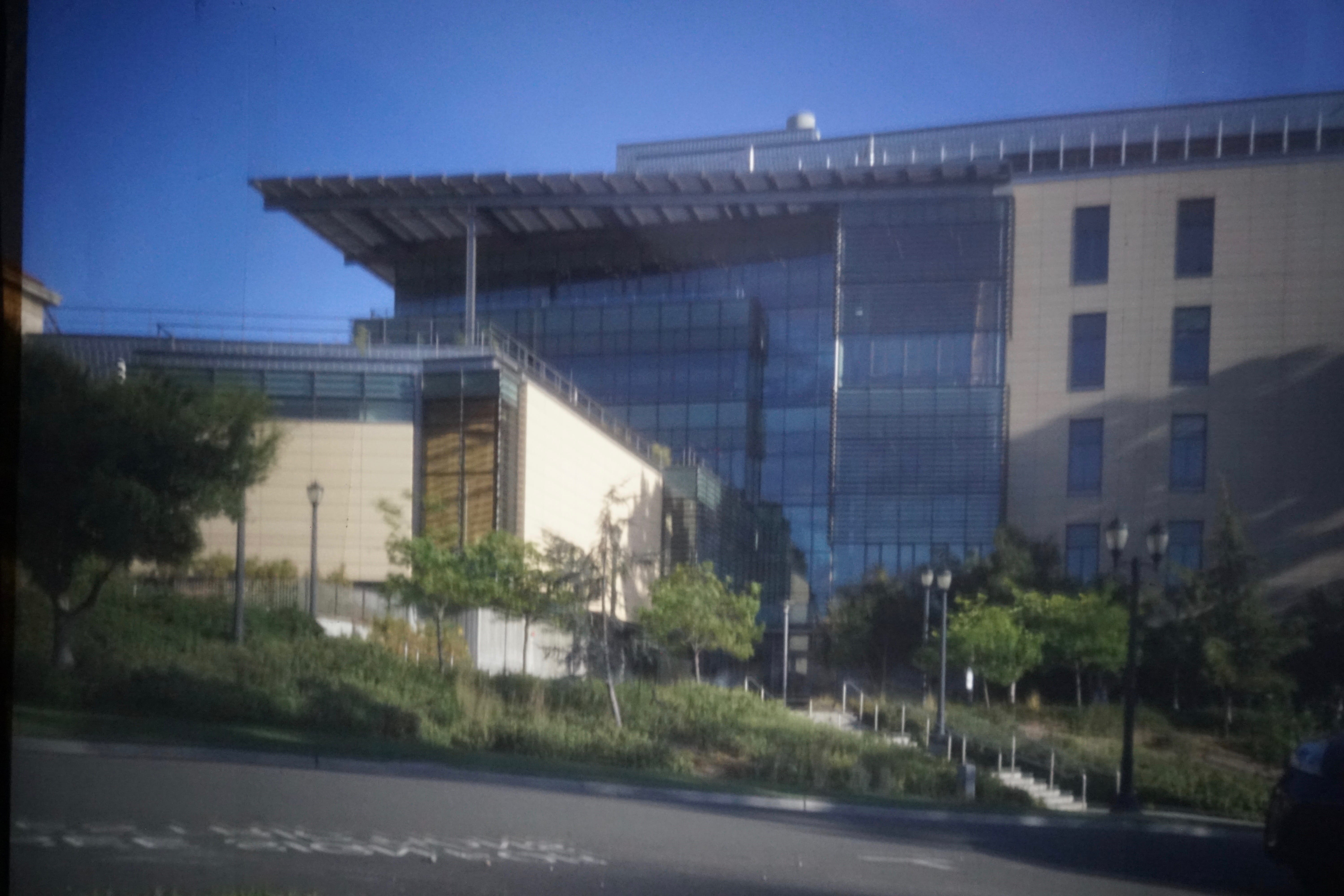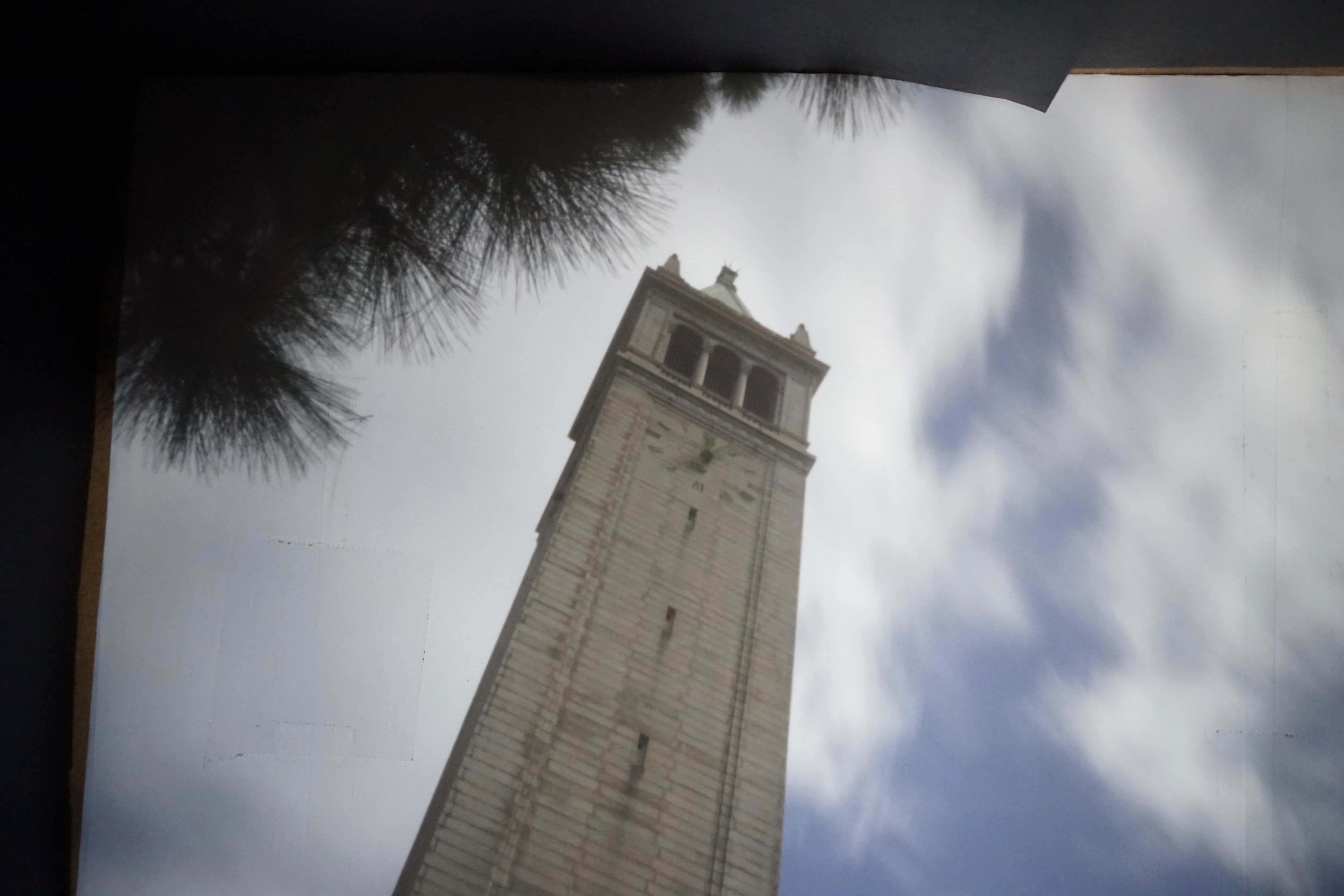CS194-26 Project 2: Building A Pinhole Camera
Brandon Huang, Jiana Huang, Maxwell Gerber
Brief Project Overview
A pinhole camera is essentially a light-sealed box with a small opening(pinhole) on one face and a light screen on the opposite face. When light reflects off the environment and enters the pinhole, it hits the light screen creating an inverted image. This image is very faint, so we use a digital camera with a long exposure time to increase the amount of light that hits the screen. We varied the size of the pinhole to test which pinhole size created the clearest pictures.
Camera Setup
We used a larger-than-shoebox box as our pinhole camera. We covered the inside with black paper except the side with the screen (white paper). We duct taped the box closed to reduce the amount of light and left a small hole that we can cover with our different pinhole sizes (punched in on black paper). We cut a hole for the digital camera to sit below the pinhole and a smaller box to prop up the camera. According to the given formula of 1.9 * sqrt(f * lambda), our optimal pinhole size should be 0.78 mm. so we went as small as we could using a single thumbtack punch, followed by two more pinholes at about 2 and 4 mm.

Conclusion
The smallest pinhole worked the best with a longer exposure, as it was the least blurry. We had to increase the exposure time to 20s to compensate for the lack of light. The larger pinholes allowed much more light, but also created more blurry pictures as too many light rays would hit the screen that were from multiple points.

